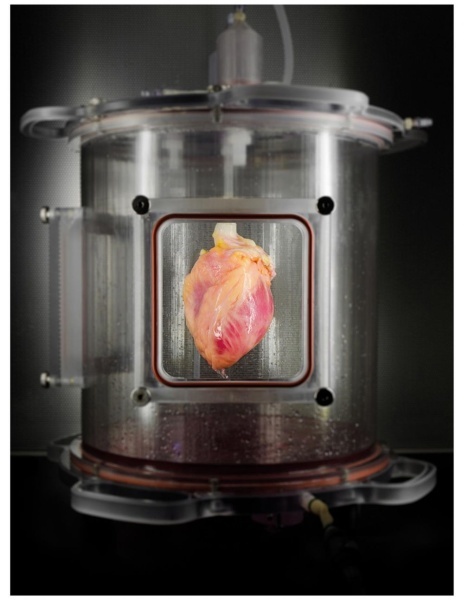Scientists have grown the human heart in the laboratory for the first time.

Genetics from the Massachusetts Hospital and Harvard Medical School successfully conducted experiments on growing human hearts in a laboratory. On the frame, taken from unsuitable for transplantation of donor hearts, tissues grown from stem cells derived from the skin of patients grew up.
Patients who require organ transplantation, even in case of successful finding of the donor, are faced with problems of rejection by the body of foreign tissues. Often, the donor can not be found, which leads to the death of the patient.
Previously, scientists have already developed technologies for producing induced stem cells from the patient’s tissues and growing small sections of tissues of various organs in the laboratory. Now these technologies are connected to grow the entire organs.
')
For growing an organ, a framework is needed on which tissues gradually grow. In the experiment, 73 donor hearts recognized as unsuitable for transplantation were used. Using a special detergent, all the cells that could cause rejection were removed from the original hearts (such actions were carried out only on mouse hearts).
Then, scientists used the technology of messenger RNA to transform adult skin cells into stem cells. It is also a fairly new technology that is considered more effective than gene manipulation. Cells were then induced to reproduce cardiac tissue.
Within two weeks in the nutrient solution, the muscle tissues grew on the initial cardiac framework. After that, by submitting an electric discharge to new organs, the scientists discovered that the hearts began to beat.
The organs that are still received look like underdeveloped human hearts. It is necessary to achieve perfect conditions for their growth (pressure, composition of the nutrient solution, etc.), to accelerate the process of cell growth, etc. Researchers believe that, in the end, they will be able to achieve the goal - to grow full-fledged organs from the patient’s tissues “to order”.
Source: https://habr.com/ru/post/371985/
All Articles